Interrogations of safety, freedom and solitude
Responding to 5 WAYS 2 RUN by Jasmine Kahlia
As humans, we frequently navigate many emotions and identities at once. These conflicting feelings can make being human both a gorgeous and painful task. Some days, I scroll through Facebook and realise my phone is no match for the ocean separating my family and me. Other days, I relish the solitude brought on by lockdown and distance. Then there are days where I want to wake up, put on my shoes, and run as far as my body can physically carry me: escape plague island altogether; outrun those gorgeous, painful, conflicting emotions that I harbour.
In 5 Ways to Run, this idea of conflict and multiplicity is at the centre of a beautifully evocative film that rotates between video journal, poetry performance, and documentary. Images of London and Barcelona streets are intermixed with symbols and sounds that pay homage to isolation, autonomy, and sadness. Trap and electronic jazz underscore footage of council estates, white walled bedrooms, a meandering cat, and sunny blue skies held tightly in frame.
Jasmine Kahlia - a self-described “hood documentalist” - captures the serene and eerie nature of abandoned streets in the dark of night whilst unpacking the conflict of being many things at once: happy and sad, angry and peaceful, chaser and being chased.
“I’m sick of explaining my experience of life,” Kahlia interjects between listing off the many ways in which they identify: “nonbinary”, “I am lost”, “I am transcending, leaving, ending.” This is one of the most striking moments of the film. Although Kahlia will go on to recite these markers once again, they make clear that doing so is exhausting, stifling, and ultimately diminutive, rarely revealing the many facets of who and what Kahlia has experienced.
In the 1st way 2 run, Kahlia explores the trauma and pain of losing a friend to the hands of suicide, as their own satin-gloved hand plays with a single rose. Kahlia recounts the burgeoning desire of a summer romance, while oscillating between not wanting to be touched and longing for the heat and humidity between two bodies. The image of a rose, both beautiful and dangerous, soft red petals protected by thick green thorns, reinforces this conflict between love and loss.
As the film continues, the world explodes from Kahlia’s bare bedroom into the streets of London. We see them cycling past grey tower blocks and through garages with abandoned cars. With no other human in sight, we are anchored only by Kahlia’s rapping. One bar in particular frames this scene: “gotta stay alone 2 stay safe.” Although Kahlia has broken free from the isolation of their room, they choose to solely navigate the city.
I am reminded of this past year and a half; how freedom has been outside streets, grassy parks, any bit of sunshine and fresh air I could get. But, Covid has made other bodies feel dangerous, and the best days out I had early on in lockdown were when I was able to explore parts of my city free from other people. While walking alone, jumping between Fiona Apple’s Fetch The Bolt Cutters and Megan Thee Stallion’s Good News, I was able to process the sheer loss that ravaged my own family. Some days, I was Apple’s angry, raw rock, other days I was feeling myself to ‘Savage Remix (feat. Beyoncé)’. Some days, I allowed myself to walk in silence and cry behind dark sunglasses. No matter the soundtrack, all these moments served to carry me through a period of feeling trapped with nowhere to run.
The 5th way 2 run sees Kahlia taking back the narrative, returning to their solitary sojourn through the city. There is a freedom in seeing Kahlia ride their bike with abandon, speaking directly into camera, delivering epithets from a time waster who sends noncommittal texts of ‘soon come’ and ‘call u in a sec.’ As Kahlia states, this is just another way to run from connection. What speaks to me is Kahlia’s understanding that to want consistency in relationships and to appreciate solitude are not mutually exclusive. We, as humans, are complicated, multifaceted beings—we deserve and should be afforded nuance.
In Danez Smith’s ‘how many of us have them?’, the poet reflects on the power of friendship and deep ache caused by death. Towards the end of Smith’s poem, they pay homage to friends who have passed on, “my keys, drives me home. the wind is tangled/ with the dust of the dead homies, carrying us over/ to them, giggling in the mirror. hear them.” Smith’s poetry evokes that urgency driving Kahlia’s pedalling through the dark of night. It is the bike that “drives” Kahlia home, but it is also the pain that pushes their legs a bit further as the film comes to a close. It is what causes me to wake up in the morning and keep at this thing called life. The loss of loved ones, it carries us through - if only we can just broach the silence to hear them.
